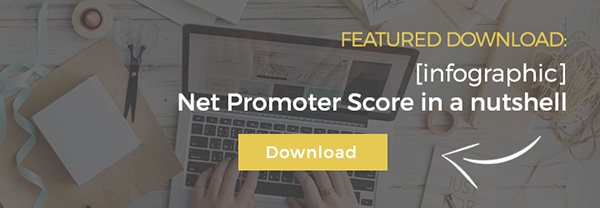7 Ways to Increase Response Rate of NPS Surveys

Last updated on August 25, 2022
So, you have decided to implement NPS in your customer experience management. What are your next steps? You are probably thinking to send the survey right away and just wait for the results.
It’s not that easy.
Now, consumers are overloaded with surveys and content from businesses more than ever. The typical customer survey response rate is often below 2%. How can you make sure that your response rates are actually higher than that?
Beware of timing
Timing is crucial. Often companies send out NPS surveys right after a customer has ordered a product. And… they get results on how good their online store is designed, not how good the product is. To evaluate feedback on your product properly, send an NPS survey after 1-2 weeks since the product has been delivered. Although there are no standards, the usual timing for NPS initial survey is 30 days after the start of the use of software or an app. Otherwise, timing largely depends on your business model, onboarding setup, engagement, and relationship with your customers.
Make it a habit
Ideally, you would be sending NPS surveys daily, checking up with both new and loyal customers. Although the timing for the first initial survey depends on what kind of business you have, later the surveys could be sent every 90 days or would depend on your customer lifecycle. The reasoning behind sending the surveys quarterly is that on average a detractor needs at least 90 days to leave for good and you need to follow up if you want to prevent this from happening. Plus, you’re not intrusive with everyday surveys and leave space for your customer to think about his experience.
Use a multi-channel approach
It might be confusing to figure out the most effective channel to ask for feedback. Should you send out e-mails? Or make a pop-up notification inside your software?
The truth is that reaching out to your customers by e-mail might lower the response rate, but stands out for more qualitative responses, and vice versa when it comes to the in-app surveys. However, an in-app survey would help you to find detractors better and will give you a chance to follow up and improve the experience of a user. After all, the customer comes first – keep your relationship with them in mind when deciding which channels would be the best. Most often the best channel for feedback is the one your customer is used to when being in contact with you: in-app if they use your app, SMS if you ask for feedback about the phone customer service, etc.
What about copywriting?
Find a creative approach to market your surveys and get higher response rates. You could ask or hand it over to your marketing team. After all, the success of your surveys sometimes lies in such small details as head titles and subject lines of e-mails, as these are the first words to capture attention and are the only words a user sees on the mobile device. Still, don’t get too creative when wording the NPS question itself. Net Promoter Score is always asked in a standard way.
No additional questions
Adding more questions to NPS could cut the response rate in half. Consumers will tell you what drives their behavior and what is truly important. Make it easy to share opinions. Remember, that with each added click or question, your chances of someone finishing a survey drop by 50%.
If the additional questions are a “must”, do it outside your NPS survey. Target specific customer segments who might be impacted by the topic.
Be careful with incentives
As much as it might be tempting to offer an incentive to receive more responses, consider it carefully. Incentives can cause some bias in the results because some consumers would not think about the responses but just click through in order to get the prize. However, it is more important to get some feedback with a small bias than to get no feedback or very little feedback with no bias. So if you have a hard time convincing your customers to provide you feedback in a timely manner, a small prize can help. Luckily incentives are not normally needed in NPS surveys. This is because NPS surveys are short and easy to answer. Companies doing long customer research surveys are more typically forced to use prizes to get their response rates to a reasonable level.
And finally…
Golden rule #1: Make it personal & follow-up
If you send surveys by e-mail, make them personal. Starting with the e-mail design, insert the name of the person you are going to ask. Then, send an e-mail from an individual instead of a “no-reply” e-mail. The chance that you’ll get an e-mail reply is still low, but it makes a psychological difference.
After you have received a reply, do a follow-up. Ideally, you would respond to every single customer manually, but in order to save time, you could write automatic replies for each category of customers, depending on their scores and feedback. Building personal relationships with your customers will both raise the response rates in the future and the scores themselves.

